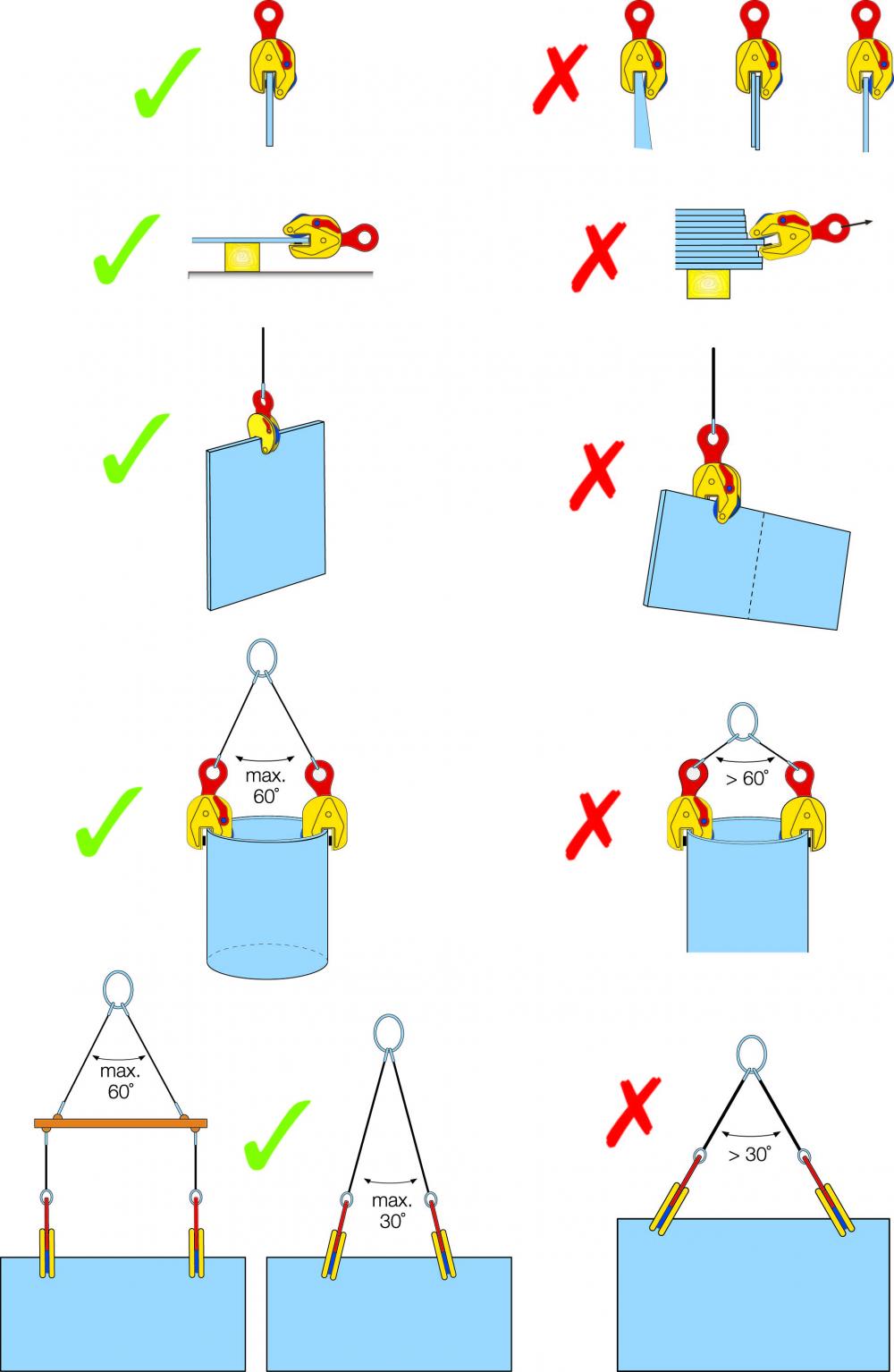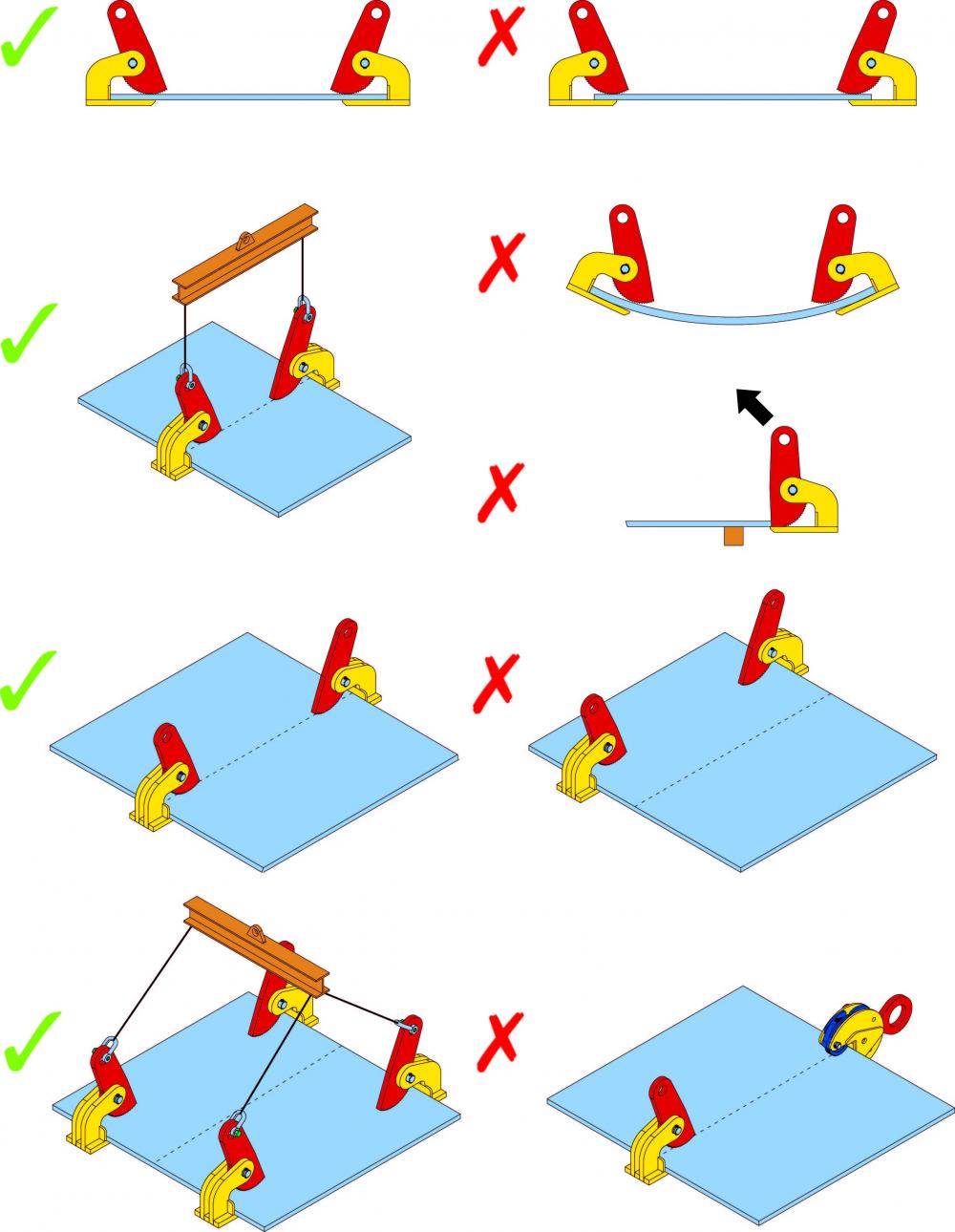Safe lifting
Safe Lifting - Absolute Safety
Your safety and safe lifting is our number one priority. Make sure to read the safe lifting instructions/manuals before using Terrier lifting clamps. Each product sheet gives extra information on safe lifting and specific application.
- Always first read the manual before using a clamp for operating, application, safety, maintenance, inspection and warranty instructions
- Lifting clamps are suitable for usage in normal atmospheric conditions (-40°C up to +100°C) unless stated otherwise
- Never overload a clamp and prevent the jerking of loads
- When loading always use the whole jaw depth
- Never lift more than one plate at the same time
- Always keep your distance during lifting and descending of a load
- Prevent situations that anybody is under the load
- Any welding to the clamp is forbidden, this can influence the hardness and toughness of the clamp

Prevent dangerous situations by seriously taking care of the following precautions:
- Never work with an untested clamp.
- Keep your distance when lifting and never stand under the load.
- Do not use the clamp if (it has been) damaged; have the clamp immediately repaired by Terrier Lifting Clamps BY or a recognized mechanical repair centre. If in doubt consult your supplier.
- Never lift more than one plate or a package of plates at a time (except the THSK).
- Never lift plates heavier than the working load limit (W.L.L.), as indicated on the clamp and in the test certificate.
- Do not lift plates which are thicker or thinner than the jaw opening, as indicated on the clamp and in the test certificate.
- When using a number of lifting damps at the same time, please provide lifting slings or chains of a sufficient length to ensure that the angle between the slings or chains never exceeds 60°.
- When simultaneously operating a number of lifting clamps time side by side, please use a lifting beam (equalizer) and lifting slings or chains of a sufficient length to ensure that the lifting shackles on the clamps are never subjected to lateral load.
- Do not place the clamp on tapered or conical sections of the plate or structure to be lifted.
- Remove all grease, oil, dirt, corrosion and mill scale from the plate at the point where the clamp is going to be attached.
- The surface hardness of the plate must not exceed 37 HrC (345 Hb, 1166 N/mm2) (except the TNMH).
- The clamp is only suitable for use in normal atmospheric conditions.
